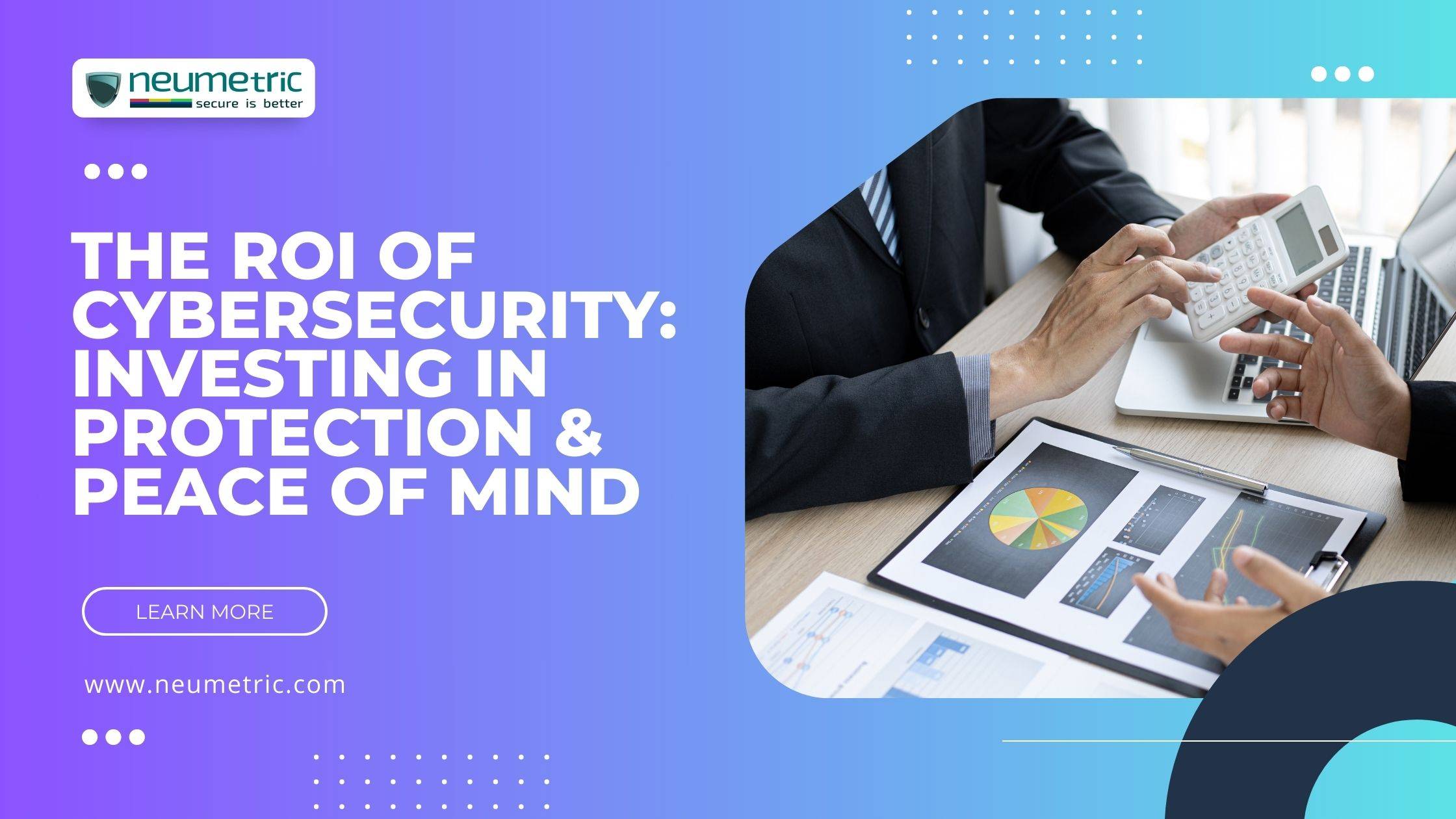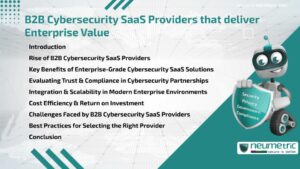Table of Contents
ToggleIntroduction
Cybersecurity involves implementing technological, operational & training controls to protect internetworked assets like computer systems, infrastructure, programs & sensitive data from unauthorised access, manipulation or cyber-attack damages. It encompasses tools, policies, best practices, insurance & technologies focused on safeguarding the integrity & accessibility of critical business systems against constantly evolving threats. Cybersecurity priorities adapt as technology control objectives evolve in our increasingly interconnected world.
Digital transformation has intensely accelerated, with the COVID-19 pandemic acting as a key change catalyst across virtually all industries. As enterprises rapidly adopt cloud platforms, IoT ecosystems, big data analytics, mobile workforce & automation technologies to gain strategic edge, their attack surface & cyber risk exposure also grows exponentially. A single breach episode can permanently erode consumer trust, inflict devastating financial losses, interrupt business-critical operations as well as cause regulatory non-compliance – all threatening enterprise stability & growth.
This Journal focuses on examining the Return On Investment [ROI] in cybersecurity & why dedicating resources to strengthen enterprise security posture provides tangible & intangible benefits that outweigh the costs of implementation over the long run. It highlights relevant statistics & examples that showcase the financial, productivity & reputation loss impact of cyber incidents. The Journal also offers frameworks to assess your organisation’s risk exposure, strategies to maximise your security ROI based on proactive planning, training & embracing cutting edge technologies; while concluding with a recap of how cybersecurity investments facilitate operational resilience & promote long-term growth of people-driven businesses.
Understanding the ROI in cybersecurity
Cybersecurity ROI determines the cost-benefit ratio of information security expenditures & allows businesses to measure the monetary gain realised by investing in cyber defences compared to the consequences of not spending on security. Positive ROI validates cyber investments while negative ROI compels businesses to reassess existing security implementations or allocate more budget proportionate to organisational requirements & risk tolerance levels.
Factors influencing cyber security ROI
- Cost of cyber attacks: Financial losses associated with cyberattacks include ransom payments, crisis management expenses, litigation charges & fines stemming from non-compliance, compromised intellectual property losses together with opportunity costs linked to disruption of business operations & stain on brand reputation.
- Cost of implementing cybersecurity measures: Upfront costs connected with cyber protections involve acquisition, integration & maintenance charges associated with security software, infrastructure upgrades like next-gen firewalls, MFA solutions, SSL certificates, access controls & payroll expenses of competent security professionals on your team.
- Potential losses & gains: Cyber risk models help estimate Potential Loss Expectancy [PLE] & Annualised Loss Expectancy [ALE] based on your digital assets. Quantifying maximum foreseeable losses allows you to insure risks appropriately & justify spending. Knowing possible opportunity gains allows you to prioritise cyber plans with best ROI.
- Long-term benefits: Proactive security investments future-proof operations against emerging threats & catastrophic losses over time. Other long tail gains include reduced insurance premiums, improved regulatory compliance, positive brand reputation & sustained customer loyalty earned.
Tangible benefits of cybersecurity investments
Reduction in financial losses
- Statistics on financial impact of cyber attacks: Per IBM’s 2022 report, average global cost of a data breach has risen to USD $4.35 million. As per Accenture, cybercrime may inflict USD $10.5 trillion in damages & claim 3.5 million lives by 2025. Research shows the ratio of cybersecurity investment to probable loss averted is 1:4x.
- Case studies or examples: The Equifax breach in 2017 that exposed personal data of 147 million people cost the company over USD $400 million in legal fees, penalties & notification expenses. The infamous Target store breach in 2013 compromised payment card details of 40 million customers, causing brand reputation loss worth millions.
Safeguarding Intellectual Property & data
- Importance of protecting sensitive information: For many enterprises, proprietary information like patents, designs, source code or unique business processes form their competitive edge & differentiate them in the market. Unauthorised access can permanently erode this advantage.
- Examples of data breaches & their consequences: The Anthem insurance hack in 2015 involving 78 million patient records ultimately cost the company USD $115 million. The infamous Sony Pictures attack in 2014 wiped out 70% of the company’s computing infrastructure causing estimated damages of USD $100 million.
Compliance & legal cost reduction
- Complying with regulatory standards: Adhering to industry regulations like HIPAA, PCI DSS, SOX, GDPR avoids steep compliance violation fines of up to 4% of global revenue mandated by policies.
- Cost savings in legal matters: Robust cybersecurity enables early breach detection & timely notification that greatly limits class action lawsuits. Most data protection laws treat breached entities more favourably if they had adequate controls in place.
Intangible returns of cybersecurity investments
Preserving brand reputation & customer trust
- Impact of breaches on brand image: Customers, business partners & investors quickly lose faith in brands that fail to protect their information assets & supply chains. Loss of existing relationships & sales opportunities can permanently stunt business growth.
- Rebuilding trust & its value: Rectifying damages from brand credibility loss can take years in absence of consumer trust. Industry reports suggest about half of hacking victims will discontinue engagement with breached entities in the future.
Enhanced operational efficiency & productivity
- Uninterrupted operations: Cyber incidents severely impact business operations often requiring temporary shutdown of vital systems which stall productivity for days or weeks. Investing in security controls & emergency response preparedness ensures minimal business disruption.
- Improved employee morale & productivity: Constructive attitudes translate to peak workforce performance & directly boost enterprise profitability. Security training & awareness fosters cyber consciousness & allows staff to contribute at full competency.
Strategies for maximising cyber security ROI
Proactive risk management
- Regular risk assessments: Periodic audits evaluating your cyber exposures based on data sensitivity, regulations & global threat climate allows cost-effective security planning tailored to your risk appetite & tolerance levels.
- Implementing the principle of least privilege: Restricting user access permissions to absolute essentials improves visibility into abnormal activity patterns & greatly accelerates breach response times.
Investing in employee training & awareness
- Importance of educating employees: Your staff forms the last line of defence. Training them on latest threats makes them judicious while increasing cyberattack identification accuracy to above 90%.
- Continuous training programs: Cybercriminals continuously refine attacks. A resilient cybersecurity culture demands regularly updated skills through mock phishing simulations, mandatory refresher programs & easy cyber assistance access.
Leveraging advanced technologies
- AI, Machine Learning & Automation in cybersecurity: Emergent intelligent systems bolster threat prevention, instantly identify anomalies, provide actionable insights & enable rapid containment responses while minimising false positives.
- Cloud security & its role: Cloud model aligns critical resources to handle traffic fluctuations while enabling ubiquitous, scalable & agile security parsed as code templates across domains at reduced TCO.
Overcoming challenges in calculating cybersecurity ROI
- Difficulty in quantifying cyber security benefits: Gauging value derived from enhanced customer trust, reliable IT infrastructure or efficient business operations poses evaluation barriers given their qualitative nature.
- Lack of standard metrics: Unlike tangible metrics like server uptime, standard indicators measuring security posture maturity are still evolving. This complicates result demonstrations for senior management.
- Addressing resistance to change & investment: Human biases may discourage moving from legacy systems or allocating separate security spending. Logical cost-gain analysis helps overcome change inertia or notions that breaches only happen to other businesses.
Conclusion
As digital transformation accelerates across industries, cybersecurity is no longer an option but an imperative for organisational sustainability. Quantifying cybersecurity ROI builds a business case for continuous investment in enterprise security & resilience. It provides monetary validation of apt safeguards implemented proportional to your risk exposure, asset sensitivity & regulatory landscape – that help avert substantial damages from increasingly sophisticated threat actors.
The cyber risk climate evolves at breakneck speed demanding security strategies that adapt at the same velocity. Regular evaluation of your security controls & emergency response preparedness forms a robust cyber resilience framework sturdy enough for the dynamic future. Promoting awareness to shape prudent online behaviour across workforce layers complements technological defences. Fostering security by design right from the product conception stage promises deeper protection.
Cybersecurity is now integral to organisational viability across virtually every industry sector. Enterprise security supports overall risk management priorities in our highly internet connected world. Viewing cybersecurity as an enabler of sustained trusted relationships with stakeholders rather than traditionally as a restrictive barrier can make executive leadership its strongest advocates. Ultimately cyber risk mitigation relies on preserving integrity of your most valued assets – finances, intellectual property, business data & reputation. Comprehensive cyber plans promise secure continuity that fuels stability & future-ready growth.
FAQ:
Do we really need dedicated cybersecurity investment when we already spend on antivirus & firewalls?
While antivirus & firewalls offer foundational protection, the threat landscape has expanded way beyond their limited capabilities. Modern cyberattacks exploit zero-day vulnerabilities, use advanced evasion tactics & target enterprise users through sophisticated social engineering. Investing in robust controls like next-gen endpoint detection, email security gateways, strict access controls & continuous incident monitoring provides a layered “defence-in-depth” attuned to current attack trends. Cybersecurity investment supports your core business functionality.
How can we justify additional cyber spending to senior management?
Evaluate your risk exposure considering data sensitivity, compliance obligations & critical operations dependent on digital infrastructure. Quantify possible damages from high probability threats like phishing, ransomware or supply chain attacks based on real-world case studies relevant to your industry. This builds a clear ROI case for cybersecurity tied directly to business continuity & fiduciary responsibilities of leadership while demonstrating due diligence.
We have not faced any major security incident yet. Why invest more in cybersecurity?
View cyber risk management just like earthquake insurance. The apparent absence of a damaging earthquake yet does not inform you of geological risk levels & exposure. Cyber crime can inflict crippling damages on unprepared businesses as numerous case studies showcase. Cyber-attacks carry extreme reputational & financial impact ranging from months of business disruption, permanent loss of customer trust to even insolvency or liquidation. The question is not if, but when adversaries will target your digital infrastructure. A resilience cybersecurity posture greatly aids prompt breach response & rapid recovery.





